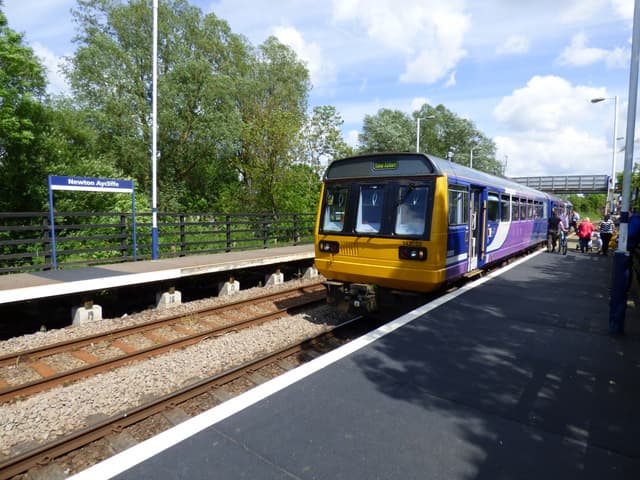Home
Trail Map
Podcasts
Word Hunt
Collection
Loading...
Trail of Discovery
explore

Locomotion Way
Stories from the S&DR
This stretch of railway where history sped ahead… literally!
Back in the early days of rail, Locomotion No. 1 was the pride of the Stockton & Darlington Railway. On this very stretch of track, the locomotive could really stretch its wheels, reaching its top speed of 12 to 15 mph.
Now, I know what you're thinking, 15 mph doesn't sound impressive by today's standards. But back then, that was faster than a galloping horse! For most people, it was the fastest they'd ever travelled in their lives.
To put it into perspective, Locomotion No. 1 could cover a mile along this stretch of line in about 5 minutes.
Compare that to a modern train, which can hit speeds of 140 mph, zipping through the same distance in just 26 seconds. Quite the leap forward, right?
Not everyone was thrilled about this fancy, new technology.
Many people were wary of trains, largely because they didn't fully understand how they worked. Some believed the high speeds could harm your health by damaging your eyes or causing breathing problems. Others had even stranger fears. Imagine thinking coal smoke could turn a sheep's wool black or that the sound of the train would stop cows from producing milk!
These wild ideas might make us giggle today, but they were genuine concerns for folks struggling to make sense of their rapidly changing world.
Despite their worries, this line was a glimpse into the future. Its design of a straight, flat stretch of track allowed trains to reach higher speeds safely and efficiently.
And here's the amazing part: this piece of railway is still in use today! Modern trains still take advantage of its straight path to hit top speeds, proving that the planning and engineering of the Stockton & Darlington Railway were far ahead of their time.
The line here stands as a lasting reminder of how far we've come in transportation.
It's not just a stretch of track - it's a symbol of innovation, courage, and the incredible journey of rail travel from steam engines to modern high-speed trains.
Locomotion Way is a historically significant stretch of railway, notable as a section where Locomotion No. 1 was able to reach its top speed of 12 to 15 miles per hour. While modest by modern standards, this speed was faster than a galloping horse at the time, offering many people their first experience of high-speed travel. The straight, level design of this portion of track made it ideal for early speed trials, allowing the locomotive to cover a mile in approximately five minutes. Today, high-speed trains continue to use this same route, covering the same distance in a matter of seconds.
Public reaction to early rail travel was mixed. While it represented a major technological leap, there was widespread uncertainty and suspicion. Some people feared the health effects of high speeds, believing it could damage eyesight or breathing. Others expressed concern that coal smoke might discolour livestock or that the noise could disrupt agriculture. Despite these early reservations, the enduring use of this track highlights the foresight of its original engineers. Locomotion Way remains a physical link between the pioneering days of steam and today's modern rail network.




















